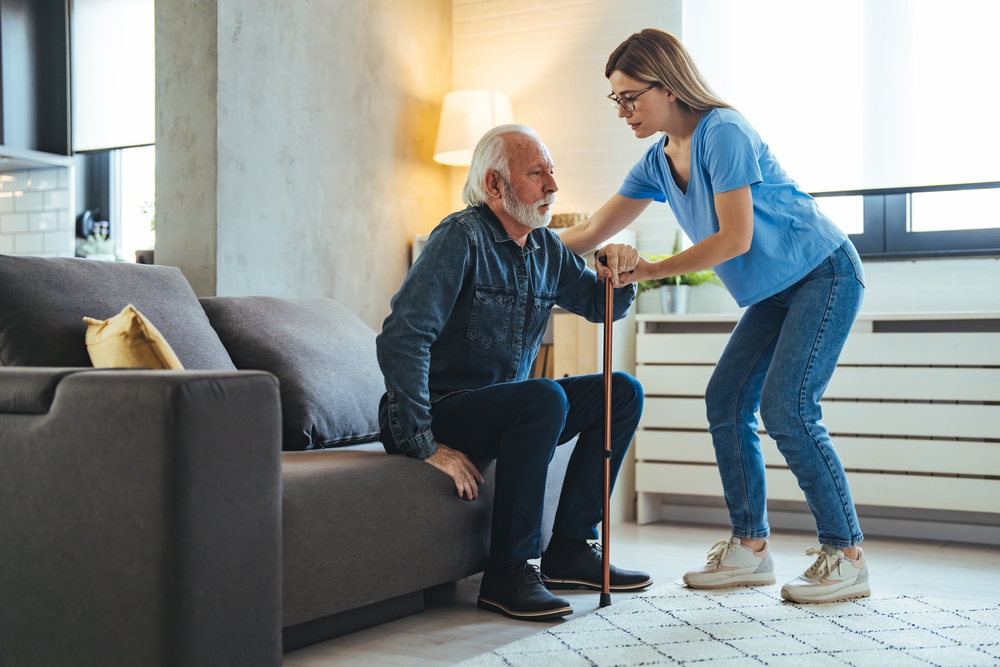A stroke can have lasting effects on physical and cognitive abilities, which often require ongoing care and support at home. Whether you’re new to family caregiving or looking to enhance the care you provide, understanding the essentials of home care for stroke survivors is crucial. Let’s explore some practical tips and guidance to help you provide the best home care possible for this chronic condition.

Homecare Tips on Medical Management and Professional Support for Stroke Patients
1. Educate Yourself on the Effects of a Stroke
The first step in caring for a stroke patient at home is understanding the potential effects of a stroke, which can vary widely. These may include physical impairments, cognitive challenges, and speech difficulties. Knowing what to expect will help you better anticipate your loved one’s needs and adapt your care accordingly.
2. Learn About Insurance Coverage
Navigating insurance coverage for stroke care includes hospital stays, rehabilitation services, medications, and medical equipment. Familiarize yourself with the specifics of the coverage to ensure you’re making the most of available resources.
3. Keep Medical Records Well-Organized and Available
Keep a detailed log of all medical appointments, treatments, and medications. This will be invaluable during consultations with healthcare professionals, helps ensure continuity of care, and makes dealing with insurance easier.
4. Consult and Coordinate with Health & Rehabilitation Professionals
Having consistent communication and visits with healthcare professionals ensures all aspects of in-home stroke care are aligned and working towards the same goals.These professionals include doctors, nurses, home health aides, and rehabilitation therapists such as physical therapists and speech-language pathologists.
5. Maintain a Medication Routine While Monitoring Side Effects
Establish a strict medication routine, ensuring that all prescriptions are taken as directed. Be vigilant in monitoring for side effects or changes in behavior, and report any concerns to your loved one’s healthcare provider promptly.
6. Implement Preventative Care Measures
Implementing preventative care measures for stroke patients involves scheduling regular check-ups, closely monitoring vital signs, and maintaining a balanced diet and exercise routine. These steps help in early detection of potential issues and reduce the risk of further health complications, promoting long-term recovery and stability.
7. Reduce Risk Factors for a Second Stroke
Reducing the risk of a second stroke is a top priority in post-stroke care. Manage risk factors like high blood pressure, high cholesterol, and diabetes. Encourage your loved one to follow a heart-healthy diet, engage in regular physical activity, and adhere to prescribed medications.
Tips on Home Environment and Safety for In-home Stroke Care
1. Make Necessary Home Modifications
Create a safe and accessible home environment, making modifications depending on your loved one’s needs, like installing grab bars or rearranging furniture for easier movement.
2. Keep Up with Housekeeping
Regular housekeeping helps prevent accidents, reduces stress, and creates a more pleasant living environment.
3. Prioritize Fall Prevention
It is essential to ensure home safety. Falls are a common risk for stroke patients, especially those with mobility or balance issues. Remove tripping hazards and ensure that all areas of the home are well-lit to minimize this risk. Using non-slip mats and installing handrails can also help prevent falls.
4. Ensure Comfort and Relaxation
Creating a comfortable and relaxing environment is crucial for your loved one’s recovery. This includes choosing comfortable seating, ensuring proper temperature control, and creating a quiet space for rest.
Tips on Helping Stroke Patients With Daily Living and Rehabilitation at Home
1. Prepare Healthy Meals
Prepare meals that are nutritious and tailored to any dietary restrictions or recommendations for stroke patients provided by healthcare professionals. Proper nutrition supports overall health and helps in managing conditions like high blood pressure and cholesterol.
2. Ensure Daily Exercise
Regular physical activity is essential for stroke recovery, helping to improve strength, mobility, and overall well-being. Work with a physical therapist to develop an exercise routine that is safe and effective for your loved one.
3. Measure Their Progress
Keep a record of your loved one’s improvements in areas such as mobility and speech. Regular progress assessments can help identify areas that may require additional focus or adjustment in the home care plan.
4. Monitor Any Behavioral Changes
Behavioral changes are common after a stroke. Be attentive to any changes in mood, personality, or behavior, and discuss these with healthcare professionals. Early intervention can help manage and provide the necessary support for these behavior changes.
5. Adjust Communication Methods as Necessary
Stroke patients may experience difficulties with speech and communication. Adapt your communication methods to accommodate these challenges. Speak clearly, use gestures when necessary, and be patient. Consulting with a speech therapist can also provide tailored strategies to improve communication and enhance recovery.
Emotional and Social Support for In-home Stroke Patients and Yourself
1. Provide Consistent Emotional Support
Emotional support is crucial for stroke recovery. Offer encouragement, understanding, and a listening ear. Emotional support from family and friends can significantly impact their motivation and outlook on recovery and helps with social isolation.
2. Focus on the Positives
Staying positive is key to maintaining hope and motivation during the recovery process. Focus on progress, no matter how small, and celebrate these achievements together.
3. Know When You Should Seek Additional Support
Recognize when additional support is necessary, such as during periods of increased stress, changes in the patient’s condition, or when caregiving becomes overwhelming. Seeking help from other family members, professional caregivers, or community resources at these times can ensure the patient receives the best possible care while also maintaining your well-being.
4. Remember to Practice Self-Care
As a caregiver, it’s important to take care of your own physical and emotional well-being. Make time for self-care activities like exercise, relaxation, and hobbies. Taking care of yourself allows you to be more effective in your caregiving role.
5. Consider Therapy
Caring for a stroke patient can be emotionally demanding for both the caregiver and the patient. If either of you is struggling emotionally, consider talking to a therapist for coping strategies and emotional support for your individual needs.
When to Seek Professional Home Care for Stroke Patients
There may come a time when your loved one’s needs exceed what you can manage, such as with severe mobility issues, rapid cognitive decline, or complex medication management. In these cases, professional home care can provide the necessary specialized support.
Americare Provides Home Care Services for Stroke Patients
Caring for a stroke patient at home is a significant responsibility, but you don’t have to do it alone. Every day Americare supports caregivers and families in New York through the challenges of caring for stroke patients. Our team of experienced and compassionate caregivers, nurses, and therapists work together to provide comprehensive care, ensuring that your loved one receives the best possible support on their road to recovery.
Contact Americare today to learn more about how we can assist you in providing the highest level of care for your loved one.

